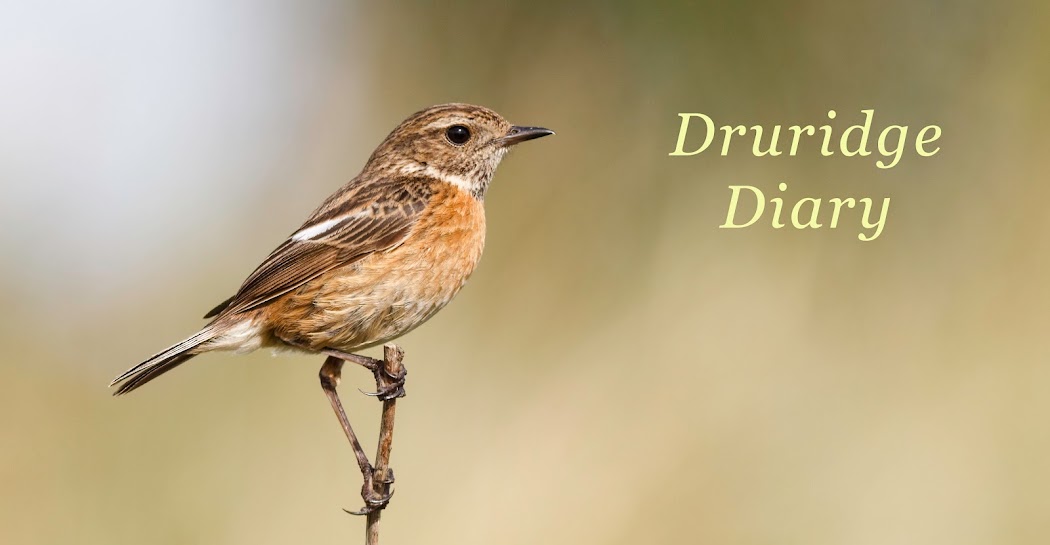The latter part of the week was dominated by very strong northerly winds - and that means seawatching.
The wind really picked up on Thursday and into Friday morning but with my diary being full, I only had a brief window on Friday morning, I was in position for 07.25, hunkered down in the dunes as the wind was very strong, it was really busy with Auks, Gannets and Kittiwakes streaming north, a lot of them very close in, too close for some which would be under my scope. Just as I got settled I got onto a group of kittis very close-in and among them was something different - a juvenile Sabine's Gull. If I'd been settled in and concentrating on a single spot it would have been under my scope and I'd of missed it.
I've never seen a Sabine's gull this close at Druridge before (I have at Church Point when I used to go there) and it was great to see it amongst adult and juvenile kittis for contrast. My first Sabine's since 2014 and my fourth for the patch - all September records in 2007, 2009 and 14. What a great bird!
It remained really busy, with hundreds of birds coming through but I only had an hour or so. Other highlights of my hour were:
Arctic Skua 1
Sooty Shearwater 9
Manx Shearwater 7
Red-throated Diver 1
and two Slavonian Grebes being tossed about on the sea.
I had planned a sea watch on Saturday but the wind had strengthened and it was raining and reports from nearby spots weren't tempting me out - I think it was just too windy.
Janet and I had walk around the patch on Saturday evening seeing very little in the still-stormy northerly. 18 Pale-bellied Brents struggled north along the beach, just above the waves and 28 Barnacles went over, high.
By this morning, the wind had really dropped. We'd opened some hooch that we brought back from Taiwan on Saturday night so I didn't get up early and only made it to the patch at 11am for another seawatch. It seemed quiet, nothing like Friday with few Auks, not Kittis and the Gannets well out. I gave it an hour :-
Sooty Shearwater 2
Manx Shearwater 4
Great Northern Diver 1
Bonxie 1
Barnacle Goose 19 (5N 14S)
Wigeon 27
Bar-tailed Godwit 2
I also had ten Swallows, mostly going north! I headed for the bushes. It seemed quite quiet with nothing really calling - a single Chiffchaff was my highlight until I found a tit flock.
 |
| Chiffchaff |
It's always worth checking roaming tit flocks as migrant birds often join them like the Yellow-browed Warbler I found with them, a dullish looking bird, then a brighter individual which moved off north, I turned around and saw it or another bright bird - I think there was three but I'll only record two as the second bird could've done a U turn.
From the path by the midget screen, I counted 21 Swallows feeding above the bushes and 17 Barnacle Geese went south. Some waders have returned to the Budge fields at last, six Dunlin and three Redshank - it's a start.














































